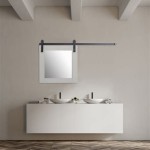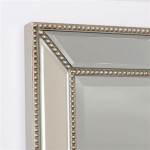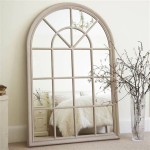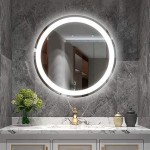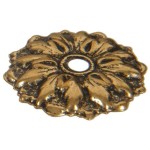Can You Hang a Mirror on a Plasterboard Wall?
Hanging a mirror on a plasterboard wall is a common home improvement task. While plasterboard offers a smooth surface for decorating, its hollow nature requires careful consideration when hanging heavier items like mirrors. Understanding the wall's construction and choosing the appropriate hanging method are crucial for secure and damage-free installation.
Plasterboard, also known as drywall or gypsum board, consists of a gypsum plaster core encased between two layers of paper. This construction makes it relatively lightweight and easy to install, but also less robust than solid walls. Directly driving nails or screws into plasterboard often provides insufficient support for heavier objects, especially in the long term. The weight can cause the fasteners to pull out, damaging the wall and potentially leading to the mirror falling.
Assessing the weight of the mirror is the first step in determining the correct hanging method. Lightweight mirrors can often be hung using specialized plasterboard fixings. These fixings are designed to spread the load across a wider area within the plasterboard, providing a more secure hold. There are various types available, including self-drilling plasterboard anchors, spring toggle bolts, and hollow wall anchors.
Self-drilling plasterboard anchors are suitable for lighter mirrors and are relatively easy to install. They feature a sharp point that allows them to be driven directly into the plasterboard without pre-drilling. The anchor expands behind the plasterboard as the screw is tightened, creating a secure grip.
Spring toggle bolts are a more heavy-duty option for medium-weight mirrors. They consist of a bolt and a spring-loaded toggle. A hole is drilled through the plasterboard, and the toggle is inserted through the hole. The toggle wings then spring open behind the plasterboard, providing a strong anchor point. The bolt is then tightened, pulling the object towards the wall.
Hollow wall anchors are another suitable choice for medium-weight mirrors. These anchors consist of a plastic or metal sleeve that is inserted into a pre-drilled hole. As the screw is tightened, the sleeve expands, gripping the inside of the plasterboard.
For heavier mirrors, it is generally recommended to locate and utilize wall studs. Wall studs are the vertical timber or metal supports within the wall framing. They provide a much more secure anchoring point than plasterboard alone. A stud finder can be used to locate the studs within the wall. Once located, the mirror can be hung using screws driven directly into the studs.
When using screws, it's important to choose screws of appropriate length and gauge. The screws should be long enough to penetrate sufficiently into the stud to provide adequate support. Using screws that are too short can result in a weak fixing. The gauge of the screw refers to its thickness; thicker screws generally provide a stronger hold.
If wall studs are not conveniently located, or if the mirror is particularly heavy, specialized heavy-duty fixings designed for plasterboard can be used. These fixings typically involve a larger spreading mechanism behind the plasterboard or utilize strong adhesive combined with mechanical fixings. Consulting with a hardware professional can help in selecting the most appropriate fixing for the specific weight and size of the mirror.
Proper preparation is essential for successful mirror hanging. Before beginning, gather all necessary tools and materials, including a measuring tape, pencil, level, drill, screwdriver, appropriate fixings, and safety glasses. Marking the desired position of the mirror on the wall with a pencil and ensuring it is level is crucial for a visually appealing result.
When drilling into plasterboard, it is important to use the correct drill bit size for the chosen fixing and to drill straight and steadily to avoid damaging the wall. Following the manufacturer’s instructions for the specific fixings being used is also essential for ensuring a secure and long-lasting installation.
In situations where the mirror is exceptionally heavy or large, consulting a professional installer is recommended. They can assess the wall structure and determine the most appropriate and secure hanging method, minimizing the risk of damage to the wall and ensuring the safety of those in the vicinity.
Various factors influence the choice of hanging method, including the mirror's weight, the location of wall studs, and the type of plasterboard. Carefully considering these factors and selecting the appropriate fixings and techniques will contribute to a secure and successful mirror installation.

Hanging Heavy Mirror On Plaster Walls 6 Steps With Pictures Instructables

Hang A Mirror On Plasterboard Wall Soraya Interiors

How To Hang A Large Or Heavy Mirror

Buy Gripit Plasterboard Wall Fixings Hang Mirrors Up To 74kgs
How To Hang A 100 Pound Mirror On Drywall Quora

How To Hang A Heavy Mirror On Plasterboard Timber Framed Wall
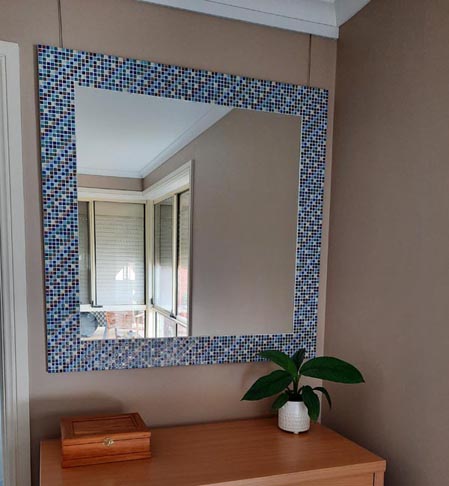
How To Hang A Very Heavy Picture Or Mirror The Best

Fixing A Mirror To Plasterboard Wall General Construction Issues Buildhub Org

How To Hang Items On A Plasterboard Wall

Gripit How To Hang A Mirror Onto Plasterboard Wall

